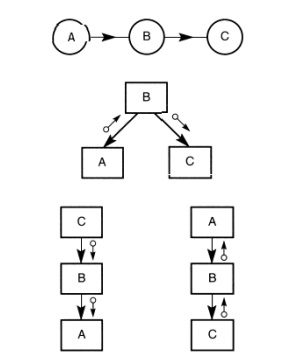Chapter: Software Design
Structured System Analysis and Structured Design
Structured System Analysis and
Structured Design

Exploratory. In this
role a prototype is used to help with clarification of user requirements and possibly with identifying how
introducing the system might lead to the need to modify the wider work
practices of an organization. One purpose might be to help with developing an
analysis of users‘ needs by providing a set of Profile of an incremental design
process. Incremental design possible models for them to use and assess.
Essentially this form of prototype is also likely to be a ‗throw-away‘ item,
and it can be considered as enhancing the information provided from the
requirements analysis and the functional specification activities. For the
purposes of this chapter, we can see that the two roles of prototyping that are
most likely to be extensively employed in incremental development forms are the
evolutionary and the exploratory.
The
evolutionary role fits with the notion of the emergent organization that was
briefly described in the preceding section. Indeed, in such a context there is
really no notion of there being an ‗end product‘, only the notion of the 'current state‘ of a system. Each new state of the system is then achieved by
modifying a previous state (not necessarily the 'current state‘), or even by
creating a completely new implementation. So in a context where the incremental
design process is continuous and on-going, the development of software may
closely approximate to a continuous process of evolutionary prototyping. One of
the characteristics of incremental design is that it usually involves some
degree of interaction with the 'customer‘ (or with 'end-users‘, who may or may
not be the customer.) Here we can see a role for the exploratory prototype,
which may address anything from very specific aspects of some element of a
system through to the functionality or behaviour of the complete system. Of
course a prototype need not actually be an item of software, especially where
such aspects as possible scenarios for the use of a system are being considered
An
example – DSDM
Person‘s implementation language is another
person‘s prototyping tool, and so the list is really an endless one. So having
examined some of the reasons why an incremental design approach may be the
appropriate one to adopt, and then briefly considered some of the mechanisms
for organizing the feedback needed for incremental design, we now need to
conside how the process might be structured. In the next section we examine an
example of one approach to RAD, in the shape of the DSDM method. An example –
DSDM
Related Topics